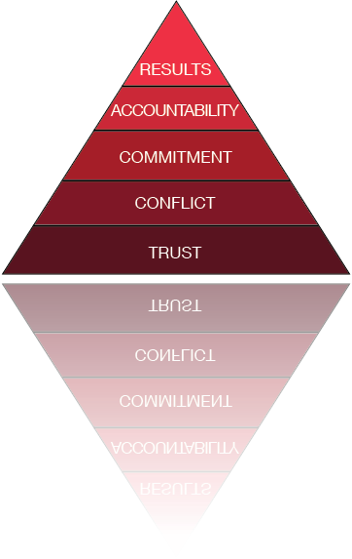Culture, Climate, and Trust
Dr. Mia Cary, CEO & Change Agent, Cary Consulting
According to Deloitte, organizations with inclusive cultures are 8x more likely to achieve better business outcomes. As we work towards making our workplaces more inclusive and welcoming it is important to create a common language and common understanding of key terms for all team members.
Culture vs Climate
Climate is what we perceive. It is typically lighter and more superficial versus culture. It defines the current mood and has also been defined as the ‘temperature’ of the team or organization. Climate tends to fluctuate based on the surrounding environmental conditions. It is important to distinguish climate and culture so you know what you are working with when leading a team and so you understand that it is okay and normal for the climate to vary from day to day as long as the foundational culture is healthy.
Culture is what we believe. Culture has more depth than climate, is typically ingrained over time, and is deeply rooted in the origins and history of the organization. Core values dictate employee behavior and because of this most often define the culture. Culture is most often very difficult to evolve and is very slow to change.
Trust is Foundational
In Patrick Lencioni’s book, The Five Dysfunctions of a Team, a leadership fable is utilized to emphasize the following five behaviors that are critical to a cohesive, high-functioning team. These are the teams that are composed of satisfied employees that operate at a consistently high level of productivity. And by the way, they have more fun.

Source: Patrick Lencioni 5 Behaviors of a Cohesive Team
Five Behaviors of a Cohesive Team
Building Trust
Mastering Conflict
Achieving Commitment
Embracing Accountability
Focusing on Shared Results
Building Trust
The first and foundational behavior of a cohesive team is trust, and specifically a vulnerability-based trust. At the heart of this type of trust is the willingness to abandon pride so that each team member can simply be themselves. This can ultimately become quite liberating, especially for people who are tired of overthinking their actions while managing the politics that accompany many work environments. Consider the team you lead or a team you are part of. On a scale of 1 to 5 where 1 is very low and 5 is very high, where do you rate your team on vulnerability-based trust?
Mastering Conflict
When a foundation of trust is in place, team members can engage in a productive, unfiltered debate of ideas. This type of conflict is focused on concept and ideas and avoids mean-spirited, personal attacks of any kind. If you are not sure where your team falls on the 1-5 continuum of mastering conflict, consider the lists that follow.
Teams that fear conflict:
- Have boring meetings
- Create internal politics where personal attacks thrive
- Ignore the most controversial, and critical topics
- Fail to tap into the diversity bonus that results from including perspectives from all team members
- Waste time and energy posturing and managing interpersonal risk
Teams that engage in conflict:
- Have lively, interesting meetings that people look forward to
- Hear ideas from all team members on a routine basis
- Focus on the real issues and solve them quickly
- Minimize politics and emphasize radical candor
- Prioritize discussion around the topics that are most critical to success of the team
With those two lists in mind, consider the team you lead or a team or one you are part of. On a scale of 1 to 5 where 1 is very low and 5 is very high, where do you rate your team on mastering conflict?
Achieving Commitment
When team members can freely offer opinions and debate ideas, they are most likely to commit to decisions. In the context of a cohesive team, commitment includes clarity around ideas and the ability to move forward with complete buy-in from every team member including those who may have initially disagreed with the decision. How many times have you left a meeting to see a few colleagues huddling in a post-meeting conversation about how much they disagreed with the decisions made? How many times did you personally leave a meeting without clarity on what was decided and who would be doing what by when? Once again, consider the team you lead or the team you are part of. On a scale of 1 to 5 where 1 is very low and 5 is very high, where do you rate your team on achieving commitment?
Embracing Accountability
When everyone is committed to a clear plan of action and understands each team member’s role and responsibilities, they will be more willing to hold one another accountable. Consider the two following lists.
A team that avoids accountability:
- Has resentment among team members because they are each held to different performance standards
- Encourages mediocrity
- Misses deadlines and key deliverables
- Places an undue burden on the team leader as the primary disciplinarian
A team that holds one another accountable:
- Respects one another
- Ensures that poor performers feel pressure to improve
- Identifies problems quickly by questioning one another’s approaches without hesitation
- Avoids excessive bureaucracy around performance management
On a scale of 1 to 5 where 1 is very low and 5 is very high, how well does your team embrace accountability? Jot it down.

Source: canweallgo_unsplash
Focusing on Shared Results
The ultimate goal of building greater trust, encouraging healthy conflict, committing to decisions, and holding one another accountable is one thing: the achievement of collective results. The highest functioning teams value collective outcomes more than individual recognition and attainment of status. Consider the following lists.
A team that is not focused on results:
- Stagnates and fails to grow
- Rarely wins over competitors
- Has high turnover, especially for achievement-oriented employees
- Encourages team members to focus on their individual careers and goals
- Is easily distracted
A team that focuses on collective results:
- Retains achievement-oriented employees
- Minimized individualistic behavior
- Enjoys success while acknowledging and analyzing failure acutely, honestly, and openly
- Benefits from individuals who value team targets
- Avoids distractions
On a scale of 1 to 5 where 1 is very low and 5 is very high, where is your team on the achievement of collective results? Do you have clear SMART (specific, measurable, attainable, relevant, and timely) goals that your team focuses on collectively? Do you measure your progress against these goals on a routine basis with the whole team and celebrate successes? Perhaps more so than with any of the five behaviors, the leader must set the tone for a focus on collective results.
Next Steps
Now that you have analyzed your team against all five behaviors of a cohesive team it is time to build on your team’s strengths while identifying the behavior that needs the most work. Create a plan of action using the five behaviors as your scaffolding. Pick one thing to commit to as a next step – what are you going to do by when? Involve your team, ask for help, and model the behavior you expect.
Resources
Radical Candor, Kim Scott
The Diversity Bonus, Scott Page
The Five Dysfunctions of a Team, Patrick Lencioni, Jossey-Bass, 2002
